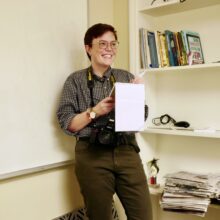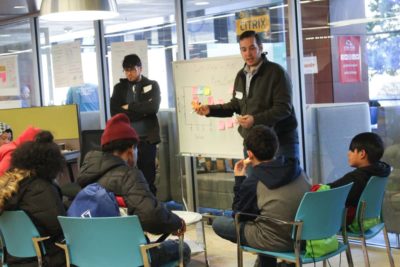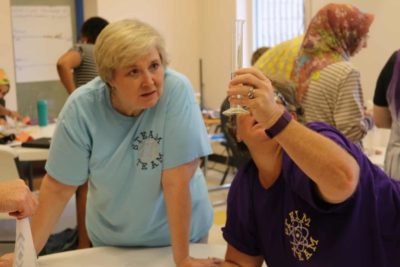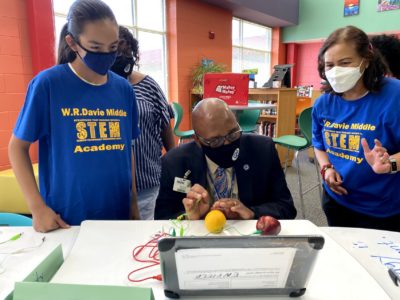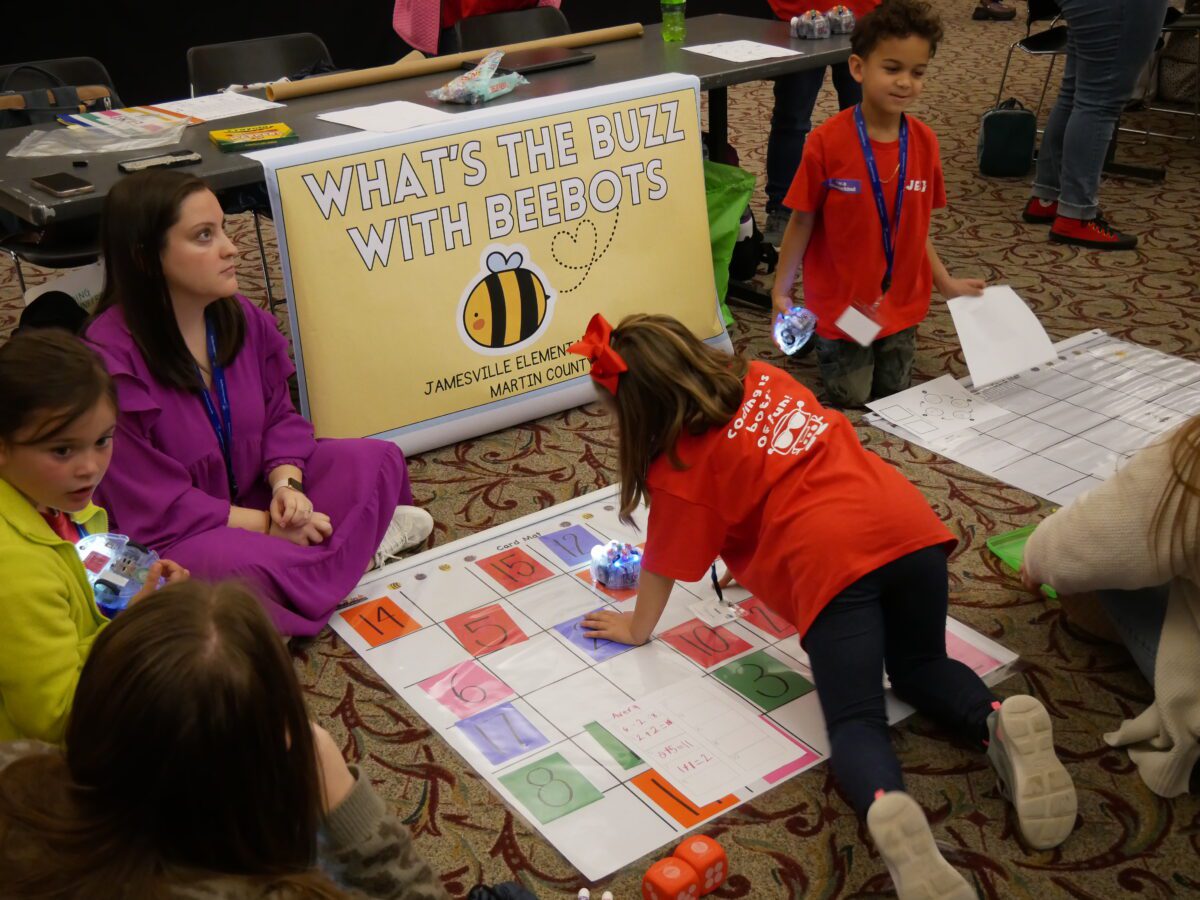
|
|
When picturing an engineering student, most wouldn’t imagine a kindergartner, but Dr. Charles Aiken said to cultivate the next generation of creative and collaborative problem-solvers, inspiration can and should begin early on.
“I think people naturally assume that’s something that high school kids do, but that interest doesn’t start in high school, it starts much younger,” said Aiken, the section chief for math, science, and STEM for the North Carolina Department of Public Instruction (DPI).
At the annual Building Engineers in K-5 Classrooms Conference, elementary educators and colleagues came together to learn more about teaching and encouraging an interest in the STEM fields for some of North Carolina’s youngest students. The conference is part of a partnership between DPI and UNC Greensboro’s SERVE Center.
With many STEM-focused industries in North Carolina looking to recruit high-quality professionals, Aiken said the conference centers on helping educators spark an early interest among students through lessons in the classroom and extracurricular activities like robotics teams and clubs.
“When we start it early, we know businesses will pick North Carolina because of the education of the public school systems. We know that they want to go where they have a workforce that they can hire,” Aiken said.
The conference last month featured workshops, hands-on activities, two keynote addresses, a student showcase, and more.
Teaching students how to fail
Steve Johnson, STEM Specialist for the SERVE center, said an education in engineering remains important for all students regardless of their future careers because it teaches students how to accept and move on from failure.
“It’s all about getting kids experience with failure in a productive way— solving problems as a team flexibly,” Johnson said. “So when something goes wrong, what are the next steps? That we’re not going to shut down and we’re going to keep working at it. We’re understanding that that’s part of learning is failing and doing it.”
The conference works to help educators teach students how to productively fail through lessons they can experience in a hands-on way rather than theoretically, Johnson said.
The ability to persevere and learn from mistakes is not only a skill sought after by universities and employers, he said, but it is also beneficial and applicable to each student’s personal life.
“It’s a life mindset — it’s not even a career mindset,” Johnson said.
Blending engineering into the curriculum
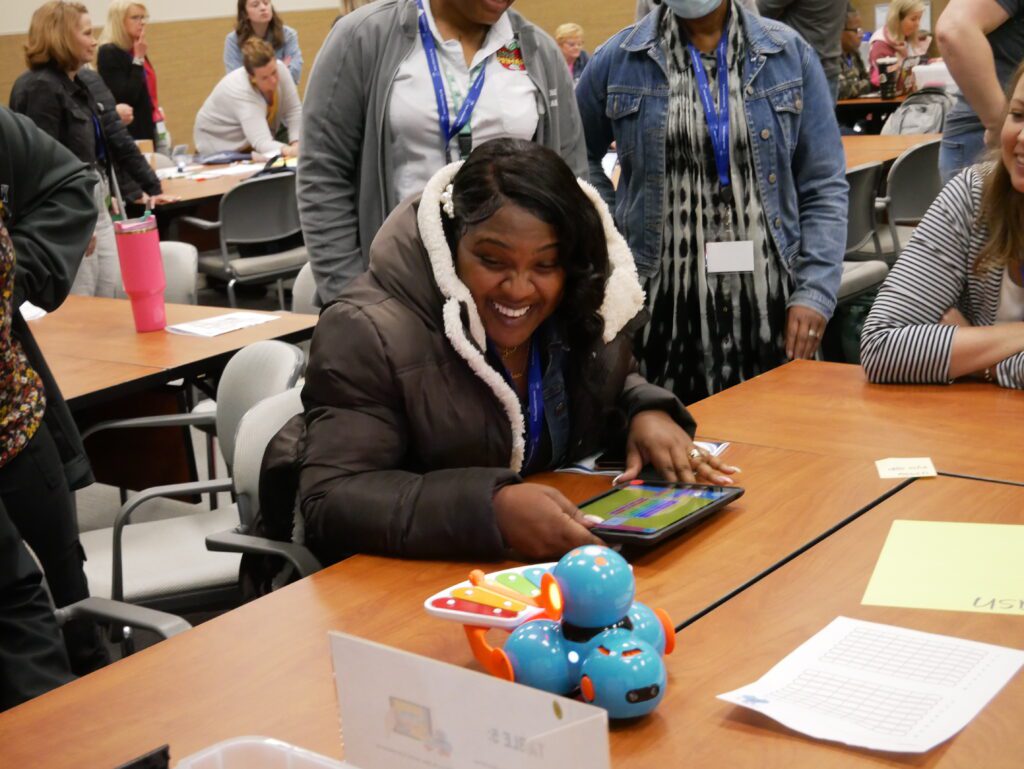
Aiken said elementary educators are often responsible for combining various subject areas, allowing students to learn and focus on multiple concepts simultaneously.
“No one set of content lives by itself, they all rely on each other,” Aiken said.
Workshops featured at the conference allowed educators to learn ways to integrate technology, engineering, and robotics into their existing curricula.
Educators learned about educational robots such as the Bee-Bot, which offers the opportunity for kids to program the device to travel on student-made maps. For example, students could program the robot to travel from a vocabulary word to its definition or from a math problem to its solution.
One workshop hosted by Dr. Laura Bottomley, director of engineering education for N.C. State University, led conference participants through a lesson plan geared toward elementary students that combined language arts and engineering.
Those in the workshop read a picture book entitled “The Little Hummingbird” by Michael Nicoll Yahgulanaas, which details the story of a brave hummingbird who works to extinguish a forest fire little by little by collecting small mouthfuls of water from a stream and dropping it on to the flames.
Bottomley then divided participants into teams to complete a project in which they could work together to build a small water-delivery device through scraps and everyday objects like cardboard, duct tape, tin foil, straws, and bottle caps.
The lesson would allow students to not only read and discuss age-appropriate literature, but also guide them to work collaboratively to solve problems based on larger themes of the story, such as wildfires or deforestation, to create a practical solution with available materials.

Creating the empathetic engineers of the future
Bottomley also delivered the conference’s first keynote address, where she discussed challenges in the world like climate change, lack of access to clean water, and insufficient housing. All of these problems can be solved by using STEM skills, she said, and solving these problems begins by inspiring students.
“We teach because we want to make a difference. We teach because we care about our students, and we care about the world,” Bottomley said. “We care about what our students are able to do in the world.”
The impetus to solving these problems begins through feeling empathy, which Bottomley said educators must work to foster among their students at an early age.
Bottomley said the largest problems we face require all kinds of minds to approach issues collaboratively, ethically, and optimistically.
“The students that come into your class with the greatest challenges can sometimes offer the most creative solutions because they haven’t had any choice but to be creative,” Bottomley said. “So we value them and we plant every single one of them and we see what grows and then when they fruit. We watch them plant their own seeds for the future. Because that’s what teaching is. It’s planting a garden and looking to see what grows and being happy that what we get is absolutely beautiful.”
